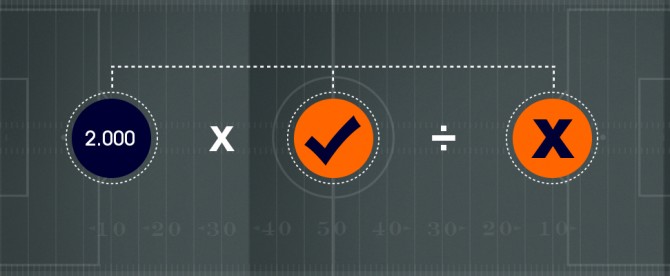
Why keep a record of your bets?
Successful long term betting needs a degree of record keeping. This isn’t as dull as it sounds –it will let you scrutinize what you’ve done, how much return you made on your investment and keep track of your future plans. By using a spreadsheet (consider google spreadsheets for collaborative working) you can see where the wins and the losses are falling. Maybe you get good returns by backing underdogs, or you might know specific teams so well that you’ve got the edge on the bookies. Alternatively, maybe a bet that’s always worked for you before has stopped working, but you keep pursuing it every week – or it’s a personal favourite team that you back even though deep down you know it’s not a good financial idea.
The wins or losses for such situations will shine out in your bet history and are a signal for you to examine what you’re doing and adapt if you need to.
Having a bet management plan within a spreadsheet or database synchronises money management, research, bet results and enables analysis, all in the one place.
Stakes and Weights
Arrange a staking plan (see resources – staking plans) in advance – set aside a specific amount as your bankroll and keep it segregated from other funds. There should be a maximum amount that you would be willing to risk on any single bet – this could be, for example, 3% of the entire bankroll. Bethawk gives each recommended bet a weighting of between 1 and 10 ‘points’. Each point can be awarded a monetary value, for example £1, £500 – it’s up to you. This value should be adjusted to suit your bankroll and circumstances. The style of betting that BetBubbles.com promotes is best suited to larger stakes, but can be adapted to most budgets.
One way of betting is to use level stakes, i.e. the same bet value for every match. This simplifies the process, however, altering the weight allocated for each bet gives a greater degree of fine tuning. The weight depends on the perceived relative strength or weakness of the betting selection. For example, if there is too much risk in a bet due to unknown factors such as a key player being 50/50 to start the match, then the weight should be reduced – but where all the ingredients involved in a bet fall into place, a large weight should be given and therefore there will be a greater financial backing for this bet.
There are further sophistications to bet management, for example using the Kelly criterion. These are worth understanding and then accommodating into your plan if they fit your style of betting.
